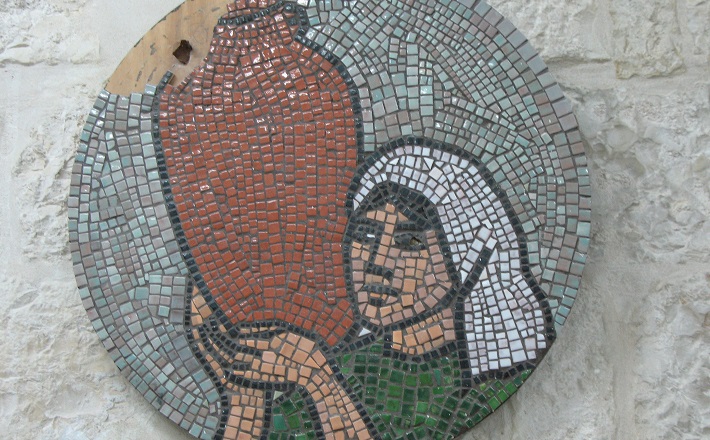Commentary on Psalm 36:5-10
As is often the case with lectionary readings from the Psalms, the preacher must decide whether she or he wants to preach only the specific lection or whether the sermon should include the entire psalm from which that lection is drawn.
In Psalm 36, verses 5-10 offer an image-laden portrait of God’s absolute steadfast love (hesed) and faithfulness. Preaching on these verses allows both preacher and congregation alike to join with the psalmist in lifting up praise to Yahweh — who stretches wider than the heavens, who stands firmer than the mountains, whose understanding reaches to the depths of the earth, and who provides salvation, refuge, and fountains of life for all who turn to God. In a world plagued with uncertainties and loyalty only to self, the assurance verses 5-10 bring is rich indeed.
Including the surrounding verses (verses 1-4, 11-12) in a sermon on Psalm 36 presents at least two pastoral opportunities:
- These additional verses paint a portrait of “the wicked” that makes the central image of God’s faithfulness stand out in sharp relief. Since the earliest days of Christianity, various traditions have emphasized human inability to describe God; instead, they suggest, we can only really describe what God is not (this is called “apophatic theology”). Psalm 36 gives us in these verses a negative comparison of what God is not like to help deepen our understanding of what God is like in the central verses of the psalm.
- These additional verses acknowledge the reality of wickedness, hatred, deception, and other evils that harm the community. This reality exists, paradoxically and often troublingly, alongside God’s steadfast love and is a reality with which every Christian must wrestle. Avoiding troublesome aspects of the life of faith does no one any favors, and the psalmist here models a way to offer honest worship in the midst of a messy life.
The text
Psalm 36 refuses to be easily pigeon-holed into one of the standard psalm categories since it contains elements of wisdom, creation, praise, and petition. One way to understand the structure of the psalm is to see it unfolding in three major sections:
verses 1-4: Description of the wicked
verses 5-9: Praise to Yahweh because of Yahweh’s steadfast love and faithfulness
verses 10-12: Plea for Yahweh’s ongoing steadfast love in the lives of worshippers
The preacher who chooses only to preach on the lection text (Ps 36:5-10) can focus only on those verses as a statement of assurance or praise, or could treat verse 10 alone as the plea portion of the psalm (rather than including verses 11-12 in the petition).
The first section (verses 1-4) is reminiscent of Psalm 1 and its wisdom-shaped description of the wicked as contrasted with the righteous. This stanza of the psalm is the only one that does not mention Yahweh’s steadfast love — because the wicked don’t have anything to do with Yahweh’s steadfast love!1 They do not fear God (verse 1), and they do not reject evil (verse 4). The psalmist makes clear that what may seem to be personal decisions on the part of these individuals actually spills over into the experience of the whole community.
Transgression deep in the heart pulses outward as harmful words, as foolish actions (things we have done) and the failure to act towards neighbor in ways that are good (things we have left undone), as disturbances of the peace we should be seeking for others, and as a preoccupation with self as the ultimate authority. These verses are a much-needed reminder that the effects of our choices always reach beyond ourselves.
The second section (verse 5-9) makes a sharp turn from the hatred of the wicked to the steadfast love of Yahweh. This section moves from the general to the particular in its praise of Yahweh’s character. For the first time, the psalmist names Yahweh, and verses 5-6 are framed, in Hebrew, by joyful calls directly to Yahweh. The poetic imagery used here to capture a fleeting glimpse of Yahweh’s steadfast love, faithfulness, righteousness, and justice draws from creation itself to show the magnitude, eternality, and even mystery of Yahweh’s character.
The end of verse 6 provides a transition to the more particular workings-out of Yahweh’s character in verses 7-9. Far from being a distant abstraction, Yahweh reaches down to save both animals and humans, to shelter them like a mother bird shelters her chicks under her wings (verse 7b), and to provide for them in every possible way (verses 8-9).
The psalm concludes with a plea for Yahweh to continue to act in accordance with the character the psalmist has described — a petition that results in salvation for the worshipper but judgment upon the wicked (verses 10-12). Prayer in the Psalms can occur because of who the pray-ers know Yahweh to be. Because the psalmist believes verses 5-9, she feels confident that Yahweh can respond favorably to verses 10-12.2 The prayer voiced here looks ahead to a time when the wicked who are wreaking havoc on the community (verses 1-4) no longer have the power to cause harm.
A subtle charge
By contrasting the characters of the wicked and Yahweh (and by revealing the ultimate failure of the former and eternality of the latter), the psalmist has implicitly offered worshippers a choice of paths to follow. We can set ourselves up as gods, flattering ourselves that we can live however we want without consequences to ourselves or others. Or we can choose to live in the protective — though sometimes demanding! — shadow of the One who is loving, faithful, righteous, and just.
Notes:
- Nancy L. DeClaissé-Walford, Rolf A. Jacobson, and Beth LaNeel Tanner, The Book of Psalms, New International Commentary on the Old Testament (Grand Rapids: Eerdmans, 2014), 338-39.
- Walter Brueggemann and W. H. Bellinger Jr., Psalms, New Cambridge Bible Commentary (New York: Cambridge University Press, 2014), 179.


January 20, 2019